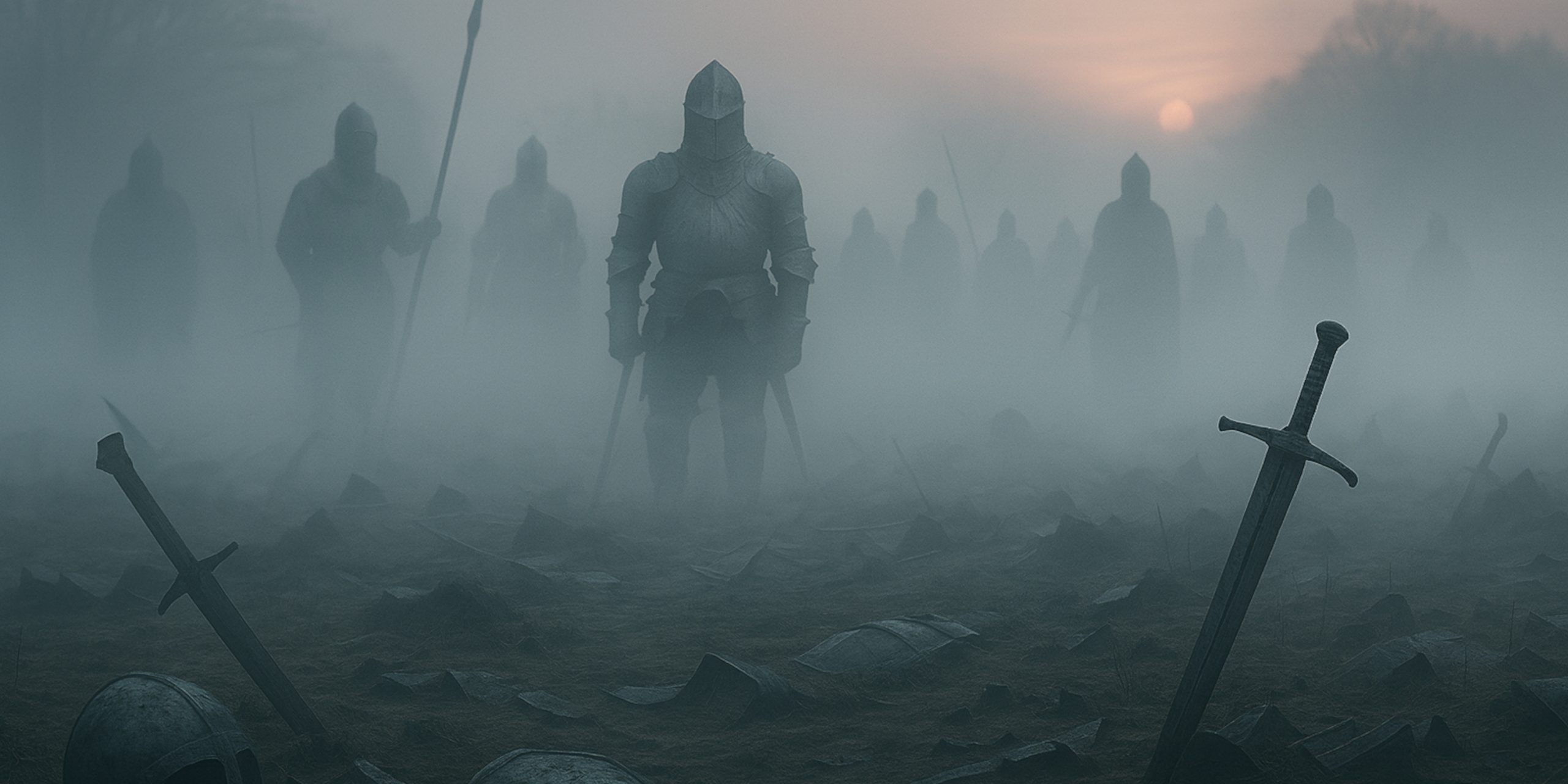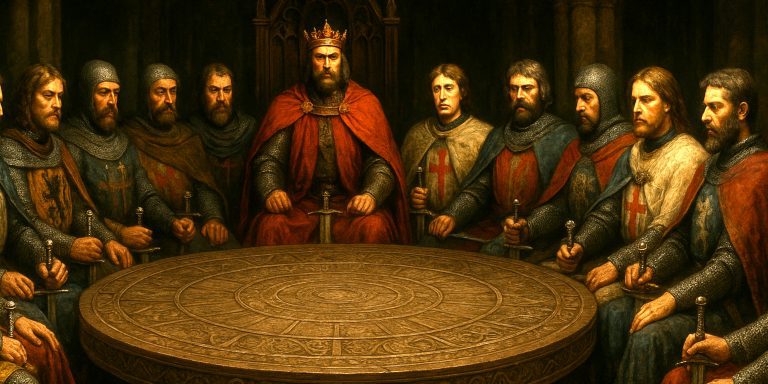
History has a habit of lingering. Some places refuse to forget, and nowhere does that feel truer than on the fields where thousands died in armour and mud. Medieval battlefields are curious things, half sacred, half cursed, where human courage, folly, and horror once collided. Historians visit them for evidence. Locals speak of lights, whispers, and the feeling of being watched. Perhaps the two groups are not so different.
Below are a few battlefields where the medieval dead, if stories are to be believed, have found no peace.
Towton, England
The Bloodiest Battle in English History
Fought in 1461 during the Wars of the Roses, the Battle of Towton left tens of thousands dead in a single, freezing day. The snow reportedly turned red, and the wind carried the screams for miles. Today, the battlefield in North Yorkshire is quiet farmland, though the locals still speak of spectral knights seen drifting across the fields at dusk.
Archaeologists have unearthed mass graves nearby, skeletons with crushed skulls, sword cuts, and arrows still lodged in bone. Sometimes, metal detectors pick up rings or badges buried alongside them, relics of men who were never claimed.
Alleged Haunting:
- Ghostly figures seen trudging through the mist.
- The sound of clashing steel and battle cries during storms.
- A strange stillness near the mass grave sites, as if the land itself holds its breath.
A battlefield so soaked in blood that the soil still remembers the violence. Towton’s peace feels temporary, as if history is waiting for another thaw.
Agincourt, France
The Ground That Mocked a King
Agincourt is remembered for English longbows, muddy French cavalry, and Henry V’s triumph in 1415. The battlefield lies near Azincourt in northern France, and though the trenches and ridges have softened with time, the air still feels heavy.
Farmers working the land have reported unearthed bones and arrowheads, sometimes entire skeletons curled in unnatural shapes. There are tales of phantom drumming before dawn and the faint cry of “God for Harry, England, and Saint George!” echoing through the fields when fog hangs low.
Alleged Haunting:
- Sounds of marching and archers releasing volleys.
- A recurring scent of smoke and wet leather after rain.
- Flickering lights resembling torches seen moving through the night.
It is said the spirits of the French still charge, and still fall, while the English ghosts simply wait for them to do so.
Bannockburn, Scotland
Where the Bruce Broke the Chains
In June 1314, Robert the Bruce’s army crushed the English under Edward II near Stirling. The victory secured Scotland’s independence, but the cost was high. Many men drowned in the Bannock Burn itself, weighed down by armour and panic.
Today, visitors report hearing splashing and shouts in the early morning mist. Some claim to see figures in tattered surcoats emerging from the fog, only to vanish when approached. The site has been carefully preserved, yet it never feels entirely calm.
Alleged Haunting:
- Echoes of horses galloping over marshy ground.
- The scent of iron and peat.
- Disembodied cries of “Freedom!” near the monument.
A proud battlefield, but one that occasionally reminds its tourists that freedom was not won cheaply.
Tewkesbury, England
A Cathedral Built Beside the Dead
The Battle of Tewkesbury in 1471 ended with the slaughter of Lancastrian forces seeking sanctuary in Tewkesbury Abbey. Blood is said to have flowed down Church Street. The dead were buried hastily, and perhaps not reverently.
Locals tell of monks walking the abbey grounds at night and of soldiers appearing briefly in the cloisters before fading into the stone. The air inside the abbey sometimes feels charged, part holiness, part regret.
Alleged Haunting:
- Chanting voices during Evensong with no choir present.
- A headless soldier seen kneeling near the altar.
- Candles flickering against still air.
The abbey’s stones are older than many kingdoms. They’ve absorbed centuries of prayers, and screams.
Crécy, France
The Ghosts of Order and Chaos
Crécy was the 1346 clash that heralded the rise of the English longbow and the decline of French chivalry. Thousands of armoured nobles died in disarray, their banners trampled by common archers. The site remains a patchwork of quiet fields near Crécy-en-Ponthieu, but locals swear it is never truly silent.
Archaeological digs continue to reveal arrowheads, horseshoes, and even the occasional buckle. The ground yields its relics reluctantly, as though releasing a long-held breath each time.
Alleged Haunting:
- Armour clanking in the hedgerows.
- The faint thud of hooves where no horses stand.
- A chill wind that rises suddenly, then stops dead.
Crécy feels like the moment honour died and modern war began. No wonder its ghosts seem confused.
Why Battlefields Haunt Us
It might not be ghosts that wander these places, but memory. Soil remembers. Bones remember. And people, especially those of us who study history, are not immune to imagination. Yet standing on these fields, it’s difficult not to feel something pressing back.
Whether it’s the weight of tragedy, the echo of thousands of last breaths, or simply the mind’s attempt to make sense of death on an impossible scale, haunted battlefields remain part of the medieval story.
They remind us that for every triumph etched in chronicles, there are countless nameless dead beneath our feet, and perhaps that is haunting enough.
The Seven Swords Takeaway
The medieval world was not clean or kind. Its wars left scars too deep for time to fully erase. So if you find yourself walking through Towton’s fields or Bannockburn’s marshes, take a moment to listen. The silence may not be as empty as it seems.
After all, the dead are terrible at letting go of old grievances.



